Not only are push ups a great way to work multiple muscle groups at once, but they're also versatile exercises that you can do just about anywhere – including the gym! If you're looking for an effective and efficient way to build upper body strength, push ups are a classic exercise that you shouldn't overlook. Whether you're a beginner or an experienced gym-goer, incorporating push ups into your workout routine can help you build a stronger, more toned upper body.
More...
In this ultimate guide to push ups gym, we'll cover everything you need to know about this classic exercise – from proper form and muscle targeting to variations and routines you can try at home or at the gym. So let's dive in and take a closer look at why push ups are such a powerful exercise, and how you can make the most of them in your own workouts.
What are Push Ups and Press Ups? The Ultimate Gym Back-to-Basics Guide
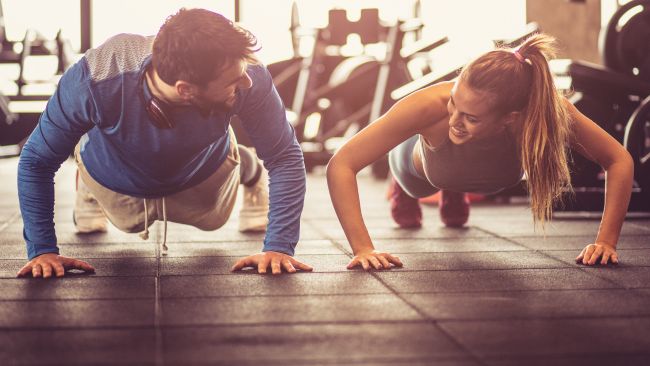
Firstly, let's discuss the difference between a push up and a press up. Ultimately, they're the same exercise. They just have different names depending on where in the world you are. For example, in the UK and parts of Europe, the term 'press up' is more common. Whereas the rest of the world tends to call them 'push ups'.
The full push up is a simple floor exercise requiring no equipment, which works the chest and arms.
You perform them in a facedown, or prone, position. Your arms support your body weight at one end, and your toes at the other.
Keeping the legs and torso off the floor, you lower your chest towards the floor. Allow the arms to bend at the elbows, and then push yourself back to the horizontal position by straightening the arms.
Where upper body strength is poor and full push ups are too demanding, an alternative and less demanding variation is press-ups from the knees (sometimes called half press-ups). These are where the legs are bent and the weight of the lower body rests on the knees, while the upper body is lowered and raised.
Why perform push ups?
The press-up is a very effective resistance exercise for the chest (and arms). But, unlike most chest exercises, you don't require any equipment. This means you can perform press ups anytime, anywhere, in or out of the gym.
Also, push up exercises are very adaptable.
Whatever your level of upper body strength, you'll almost certainly find a variation that suits you.
The chest muscles play a major role in a number of sports and other activities. We use these muscles whenever our arms move forward or across the torso. For example, in racquet sports, swimming, and gymnastics.
In fact, any activity that requires a 'pushing' action with the arms.
Since press ups are a 'free weight' exercise (i.e. performed without any equipment) and require the body to be held straight during the exercise, if performed correctly they can (and in fact should) also make demands on the stabilising muscles of the back and tummy. More on this later.
How should I perform push ups?
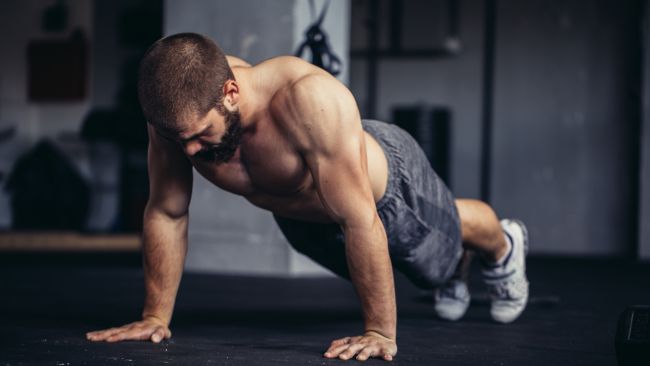
Full Push Ups on Toes | Standard Press Up Gym Exercise
Getting in the Starting Position
Lie on your front, with a straight body. Place your hands in line with but slightly wider than your shoulders. Position your feet so that your toes are on the ground.
Extend your arms and as you do so come up onto your toes, without arching or allowing your body to sag. Also, avoid throwing your head up or down.
You should now have straight arms and your heels, knees, hips, back, neck and head should all be aligned. To put it another way, a line drawn through all these areas should be pretty much straight.
If you're unsure, it's a good idea to get into position sideways onto a mirror so that you can see. Alternatively, ask a friend or training partner to check for you.
You'll find it helps to keep your trunk straight if you keep the stabilising muscles of the lower tummy pulled in and gently activated.
The Lowering Phase
Keeping the body aligned in the straight position outlined above, begin breathing in and allow the arms to bend and the chest to approach the floor smoothly.
Don't let the hips sag towards the floor or arch and keep the head fixed relative to the rest of your body.
Remember to keep those deep tummy muscles contracted in order to maintain a 'neutral' pelvis position.
When your chest is an inch or two above the floor, pause and feel the contraction in your chest.
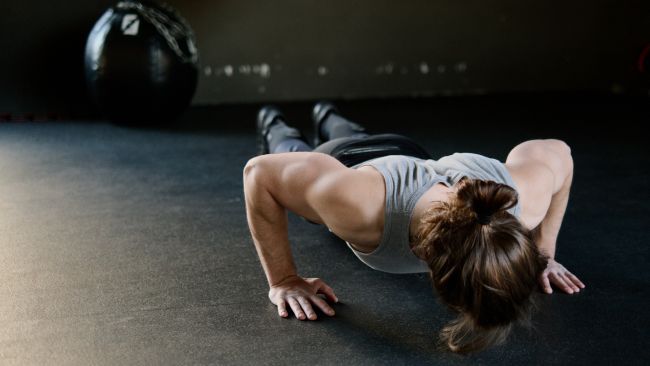
The Lifting Phase
You're now ready to lift. This is the hard part, and when it's tempting to 'cheat' by swinging the hips in order to get a bit of momentum going. Instead, raise yourself up smoothly by pushing against the floor, while simultaneously breathing out.
Throughout the lifting movement, concentrate on keeping your pelvis and hips in the 'neutral' position. That is, maintaining that straight line through the knees, hips, back and shoulders. This intensifies the work done by the chest and arms, and makes the exercise feel harder. After all, this is a chest and arm exercise!
Raise your upper body until your elbows are almost, but not quite, straight. In doing so, this keeps tension on the working muscles. At the top, pause briefly before beginning the next rep.
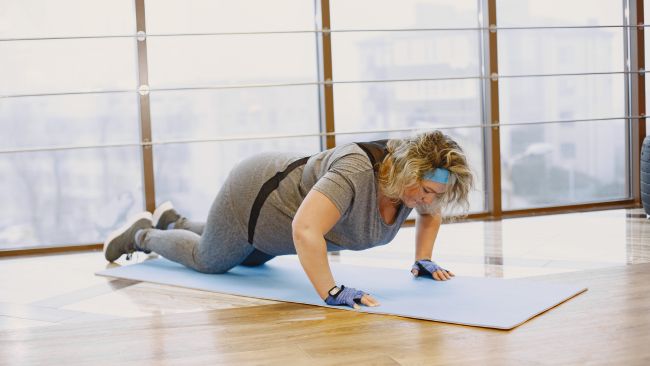
Push Ups From the Knees | Half Press Ups
If you're new to press-ups, this variation is recommended to begin with. Being less intense, it's much easier to learn the correct technique and keep the body properly aligned.
Even those who are strong in the upper body can find it useful to practise half push ups first and then move on to the full version once the correct technique has been mastered.
Getting in the Starting Position
Lie on your front, with your thighs resting on the floor.
Position your hands in line with but slightly wider than your shoulders. Next, lift yourself up by straightening your arms so that your extended arms support your upper body. Your lower body is supported on your knees.
Use a mat, cushion or pillow under your knees if the floor surface is uncomfortably hard.
Adjust the position of your hips and head so that you can draw a straight line through your knees, hips and shoulders, all the way to your head. If you're unsure about your alignment, look in the mirror or ask a friend or coach for feedback.
The Lowering Phase
Keeping your body in the straight alignment position as above.
Begin breathing in and allow the arms to bend and the chest to approach the floor smoothly. Don't let the hips sag or arch and keep the head fixed relative to the rest of your body.
Remember to keep the trunk stable and the pelvis in 'neutral' by keeping your lower tummy muscles gently contracted.
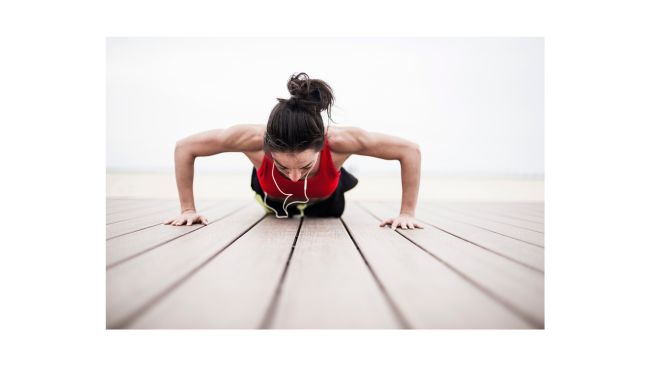
The Lifting Phase
Although easier than full press-ups, it's still tempting to 'cheat' in this part of the exercise by swinging the hips upwards in order to get a bit of momentum going.
Raise yourself up smoothly by pushing against the floor, while simultaneously breathing out.
Throughout the lifting movement, concentrate on keeping your pelvis and hips in a neutral position. Maintain a straight line through the knees, hips, back and shoulders, to maximise the work done by the chest and arms.
As in full press ups, raise your upper body until your elbows are almost but not quite straight. This keeps tension on the working muscles.
Then pause briefly before beginning the next rep.
Which muscles do push ups and press ups target, and at which point in the movement?
Performed correctly, press-ups will work the pectoral muscles of the chest, the triceps muscles of the rear arm and the anterior (frontal) portion of the deltoid or shoulder muscles.
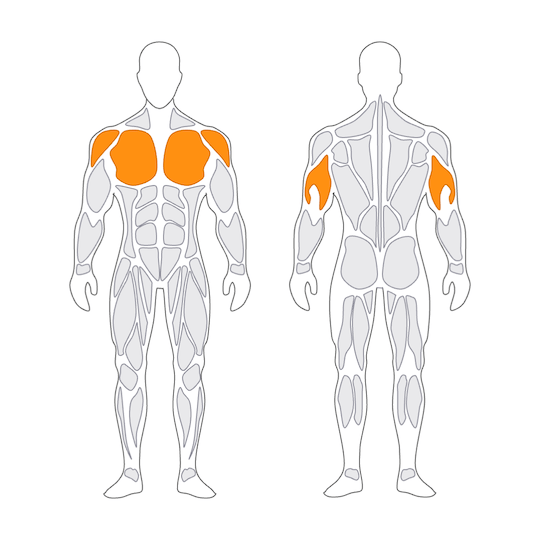
Push ups work mainly the pectoral (chest) muscles, as well as deltoids (shoulders) and triceps (back of arms).
In general, the outer pectorals (clavicular pecs) and the triceps muscles are more active at the bottom of the movement, when the chest is close to the floor.
The inner or sternal portion of the pectorals, on the other hand, is more active towards the top of the movement at the point of maximum contraction.
What other variations on push ups are there that I can do in the gym or at home?
As well as the full and half push ups described above, there are a large number of variations on the basic press-up movement. Some of these are described below:
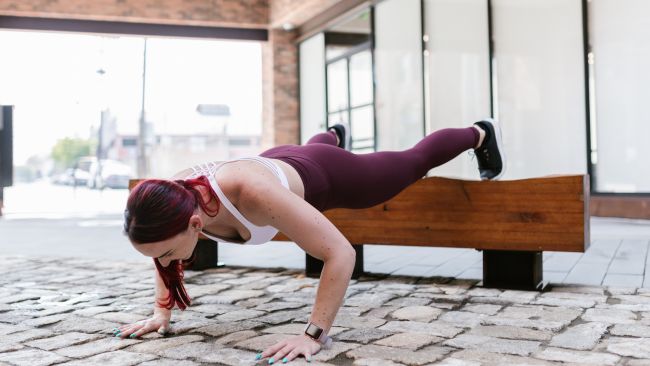
Incline press ups
In this advanced variation, you raise your feet relative to your upper body. For example, by placing them on a bench or step. This inclines the body and moves the emphasis towards the upper pectorals and frontal shoulder region.
Additionally, it also makes the exercise more difficult. These muscle fibres are relatively weaker than the mid and lower chest fibres. Consequently, it's best left until you're accomplished at standard full push ups and press ups.
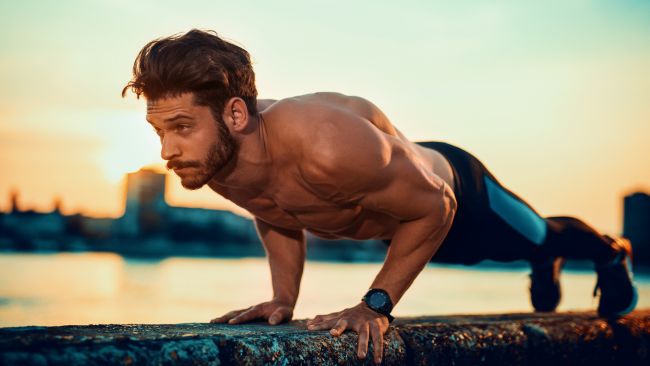
Variable hand position
By bringing your hands closer together, under your body, you shift the emphasis onto the triceps muscles of the rear arm. A wider-than-standard stance increases the work done and the stretch felt by the outer pectorals of the chest.
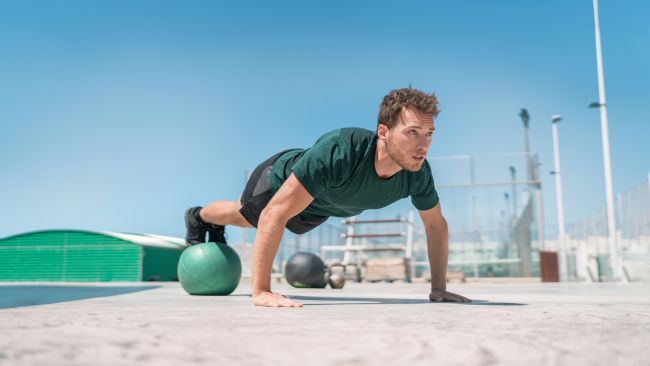
Stability ball push ups
This is another advanced variation, which requires increased trunk stability. Additionally, it'll also place extra intensity on the chest and arms.
By placing your legs on a stability ball and performing a full push up, it becomes more difficult to keep your balance. As a result, your upper body and trunk have to do way more work. As a general rule, the closer your feet are to the ball, the more difficult the exercise becomes.
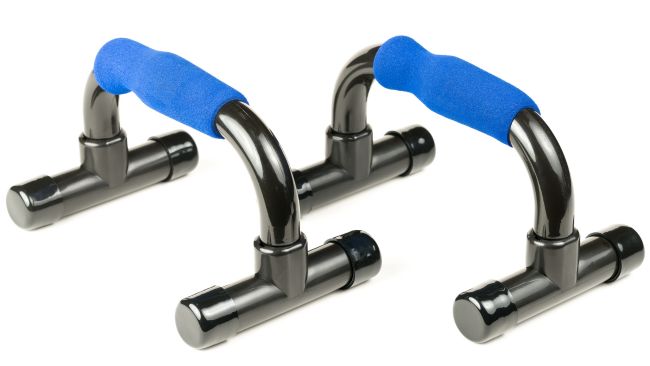
Press ups with handles
If you enjoy doing press ups, then you might like to invest in push up handles. Or, perhaps, if you do them because you lack a proper bench press facility at your gym.
These raised handles (which sit on the floor) are comfortable to grip and place the wrist in a better biomechanical position.
However, more importantly, they allow you to sink lower at the bottom of the movement. As a result, you can extend the range of movement making for a more thorough chest and shoulder conditioning exercise.
Partner press-ups
If you're strong and can complete a large number of press-ups without tiring, then you need more resistance.
This additional resistance can come from a partner. They can do anything from applying downward force on the lifting phase of the movement to actually sitting on your back!
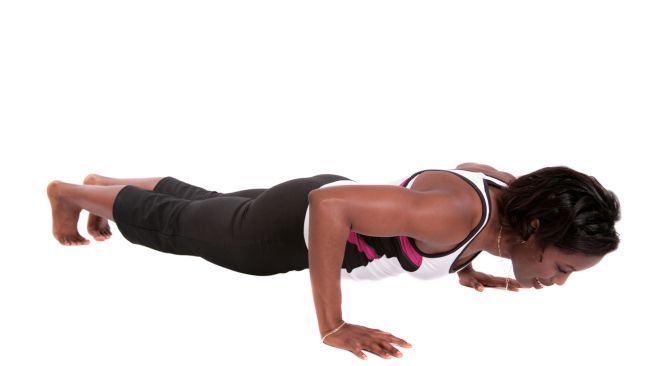
What's the best way to put together a push up routine?
Like all resistance movements, strict form is the key to success. Quality should always rule over quantity.
Unlike free weight or machine exercises, there's no variable resistance to adjust in push ups. Therefore, your best bet is to start with the easiest variations. Then, when you can perform 20 or so really strict reps, move on to harder variations.
Also, it's better to perform 2 or 3 sets of different variations of push ups. That way you can vary the angle of attack on the muscles than merely repeat set after set of the same variation.
How should I integrate Push Ups into my gym routine?
The goal of press-ups is to work the chest (and arm) muscles.
Being a basic strength-building exercise, you should perform them when the chest muscles are fresh. Ideally, before any chest isolation movements such as the pec deck. This is particularly true if you're not especially strong in your upper body.
Don't forget too that the triceps are involved. As such, try to avoid doing push ups immediately after other compound movements that use the triceps. For example, after exercises such as dips or shoulder presses and certainly not after working the triceps themselves.
READ ALSO: How to do a push up properly
